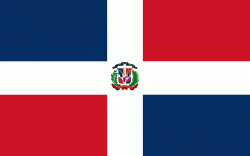San Pedro de Macorís Province (Provincia de San Pedro de Macorís)
 |
Citizens from San Pedro de Macorís are called petromacorisanos. The culture of the province shares many similarities with those of the other eastern provinces. For example, during carnival season, the diablos (devils) (Guloyas/ Buloyas) tend to wield fuetes (whips), which relates to the traditional cattle farming of the whole region.
Serie 23 is a mecca for all Dominican culture and was the home to the DR's most famous writer, Pedro Mir. In the past years the beautiful architecture of Serie 23 has been used as a backdrop for several Hollywood feature films, such as Miami Vice, The Good Shepherd and Sugar. It often stands in for Havana, Cuba.
The province as of June 20, 2006, is divided into the following municipalities (municipios) and municipal districts (distrito municipal - D.M.) within them:
* Consuelo
* Guayacanes
* Quisqueya
* Ramón Santana
* San José de los Llanos
* Gautier (D.M.)
Map - San Pedro de Macorís Province (Provincia de San Pedro de Macorís)
Map
Country - Dominican_Republic
 |
 |
| Flag of the Dominican Republic | |
The native Taíno people had inhabited Hispaniola before the arrival of Europeans, dividing it into five chiefdoms. They had constructed an advanced farming and hunting society, and were in the process of becoming an organized civilization. The Taínos also inhabited Cuba, Jamaica, Puerto Rico, and the Bahamas. The Genoese mariner Christopher Columbus explored and claimed the island for Castile, landing there on his first voyage in 1492. The colony of Santo Domingo became the site of the first permanent European settlement in the Americas and the first seat of Spanish colonial rule in the New World. It would also become the site to introduce importations of enslaved Africans to the Americas. In 1697, Spain recognized French dominion over the western third of the island, which became the independent state of Haiti in 1804.
Currency / Language
| ISO | Currency | Symbol | Significant figures |
|---|---|---|---|
| DOP | Dominican peso | $ | 2 |
| ISO | Language |
|---|---|
| ES | Spanish language |
















